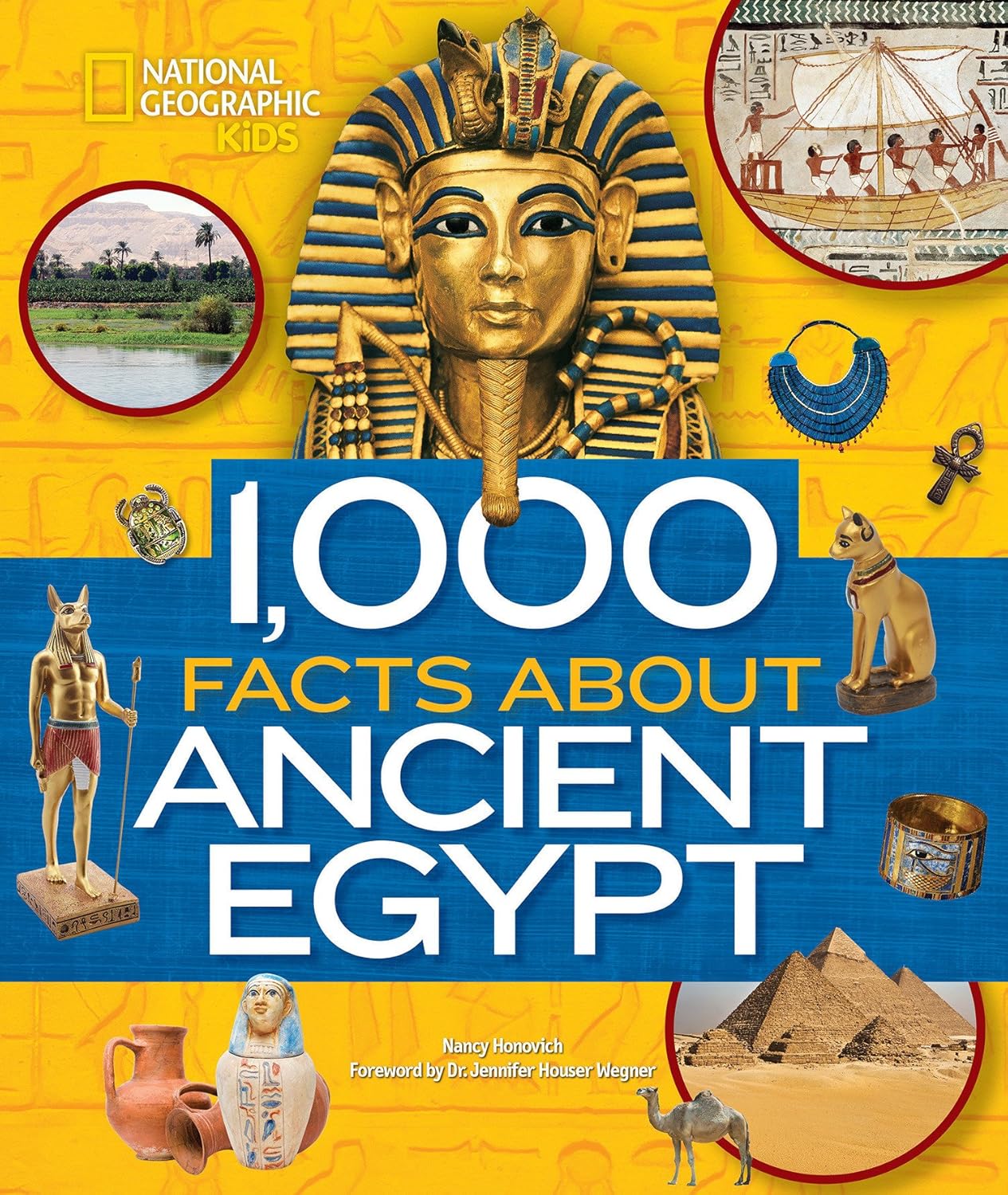1,000 Facts About Ancient Egypt
- Brand: Unbranded

Description
The modern Republic of Egypt was founded in 1953, and with the complete withdrawal of British forces from the Suez Canal in 1956, President Gamal Abdel Nasser (president from 1956 to 1970) introduced many reforms and created the short-lived United Arab Republic (with Syria). His terms also saw the Six-Day War and the creation of the international Non-Aligned Movement. His successor, Anwar Sadat (president from 1970 to 1981) changed Egypt's trajectory, departing from many of the political, and economic tenets of Nasserism, re-instituting a multi-party system and launching the Infitah economic policy. He led Egypt in the Yom Kippur War of 1973 to regain Egypt's Sinai Peninsula, which Israel had occupied since the Six-Day War of 1967. This later led to the Egypt–Israel peace treaty. I think I was told in Egypt that the pyramids were buried in sand and were only discovered when the sand was blown away a long time after they were built. It seems unlikely that something that huge could be covered in sand, but I’d like to know for sure! Reply While most of the photos we see of Pharaohs show them sporting beards, the reality is they preferred a clean-shaven face. Those beards they are often depicted in were fake and only worn for religious reasons. It is said that even female Pharaohs wore these fake beards! Egypt is often divided into two sections: Upper Egypt in the south and Lower Egypt in the north. The sections are named this way because the Nile flows from south to north. The river empties into the Mediterranean Sea. Home › Egypt › 67 fun facts about Egypt from history and nature to fashion 67 fun facts about Egypt from history and nature to fashion
Egypt Timeline - World History Encyclopedia Egypt Timeline - World History Encyclopedia
During the 2020–2021 Tigray War, Egypt was also involved. On 19 December 2020, an EEPA report stated, based on testimonials of three Egyptian officials and one European diplomat, that the UAE used its base in Assab (Eritrea) to launch drones strikes against Tigray. The investigative platform Bellingcat confirmed the presence of Chinese-produced drones at the UAE's military base in Assab, Eritrea. Egyptian officials were concerned about strengthening ties between the UAE and Israel. They fear that both countries will collaborate in the construction of an alternative to the Suez Canal, starting from Haifa in Israel. [81] On 19 December 2020, Egypt was reportedly encouraging Sudan to support the TPLF in Tigray. It wants to strengthen a joint position in relation to negotiations on the GERD Dam, which impacts both countries downstream. [81] See also [ edit ] Some fun facts about the Pyramids are that they were built to house the rulers of ancient Egypt and ferry them and their families into the afterlife. The pyramids were made as tombs for the Pharaohs and their families.The Nile flooded each year, leaving behind fertile soil for planting crops like wheat, barley, lettuce, flax, and papyrus. As the Egyptians learned how to move river water to their fields, they were able to grow more food, including grapes, apricots, olives, and beans. In fact, Egyptians enjoyed life so much that they believed that the afterlife would be almost exactly the same—except without things like sadness, illness, or pesky mosquitoes. Even pets like cats, dogs, or monkeys would join them there. The new government drafted and implemented a constitution in 1923 based on a parliamentary system. Saad Zaghlul was popularly elected as Prime Minister of Egypt in 1924. In 1936, the Anglo-Egyptian Treaty was concluded. Continued instability due to remaining British influence and increasing political involvement by the king led to the dissolution of the parliament in a military coup d'état known as the 1952 Revolution. The Free Officers Movement forced King Farouk to abdicate in support of his son Fuad.
Egypt Country Profile - National Geographic Kids Egypt Country Profile - National Geographic Kids
The first people to live on the banks of the Nile were hunters and fishermen, who settled there over 8,000 years ago. They learned to grow crops and raise animals, and they began to build villages and towns. They traded with their neighbors and learned to sail boats. By 3000 B.C., a civilization was established. Egypt is home to one of the world’s largest dams. The Aswan High Dam is the world’s largest embankment dam, spanning across The Nile separating Egypt from Sudan and creating Lake Nassar. Lake Nassar is one of the world’s largest reservoirs. Third Intermediate Period, about 420 years (ca 1075 B.C. to ca 656 B.C.): This was a time of drought, famine, and foreign invasions. But some pharaohs thrived. Although King Taharqa was a foreign ruler from Kush, a kingdom south of Egypt, he repaired crumbling temples and even began building pyramids again for the first time in about 800 years.
Photos of Egypt
The dance is still passed down to younger generations who keep the tradition going and there are plenty of places around the country where you can see this dance performed including restaurants, nightclubs and theaters.If you are traveling Egypt seeing this is must do!
- Fruugo ID: 258392218-563234582
- EAN: 764486781913
-
Sold by: Fruugo
